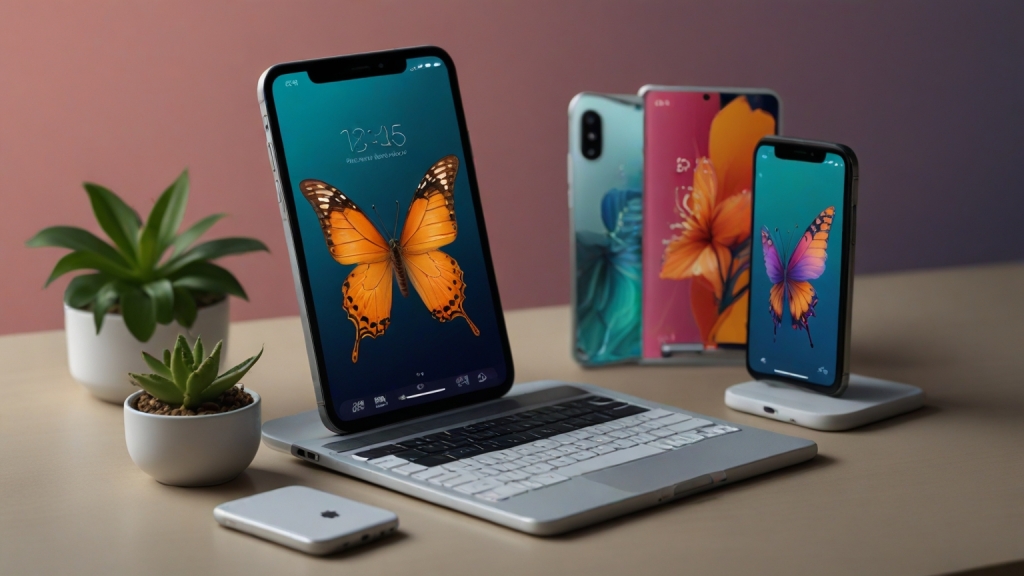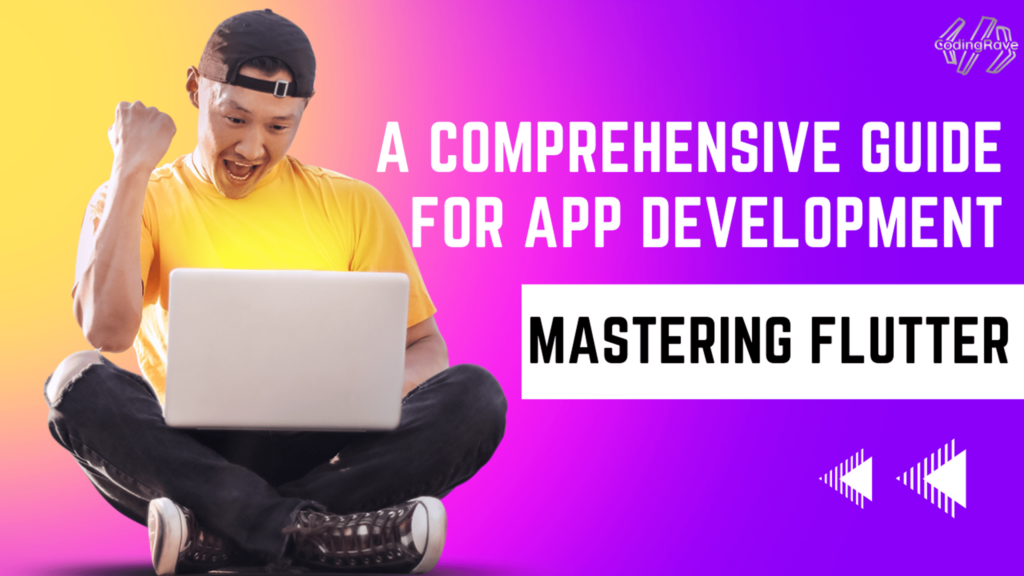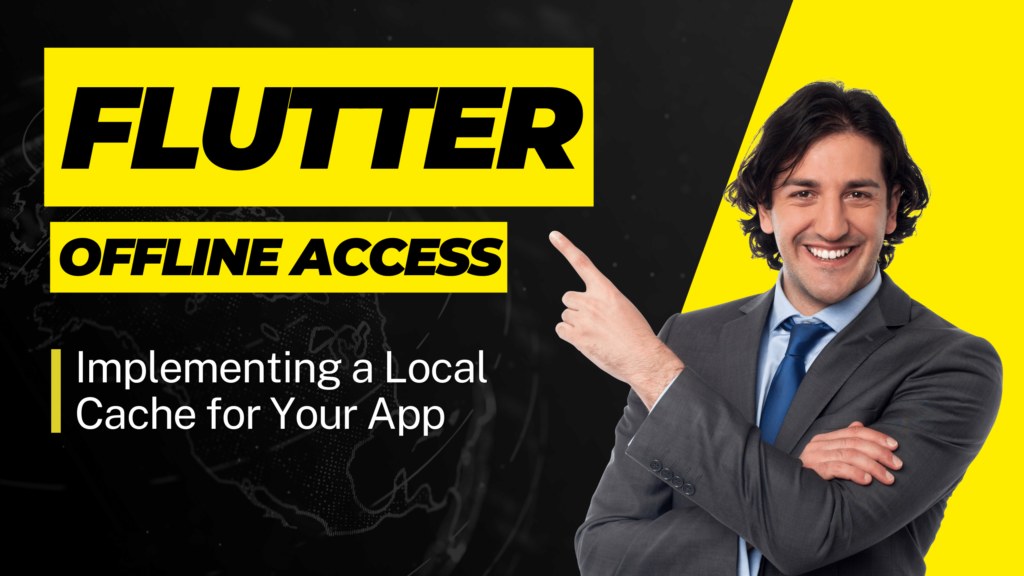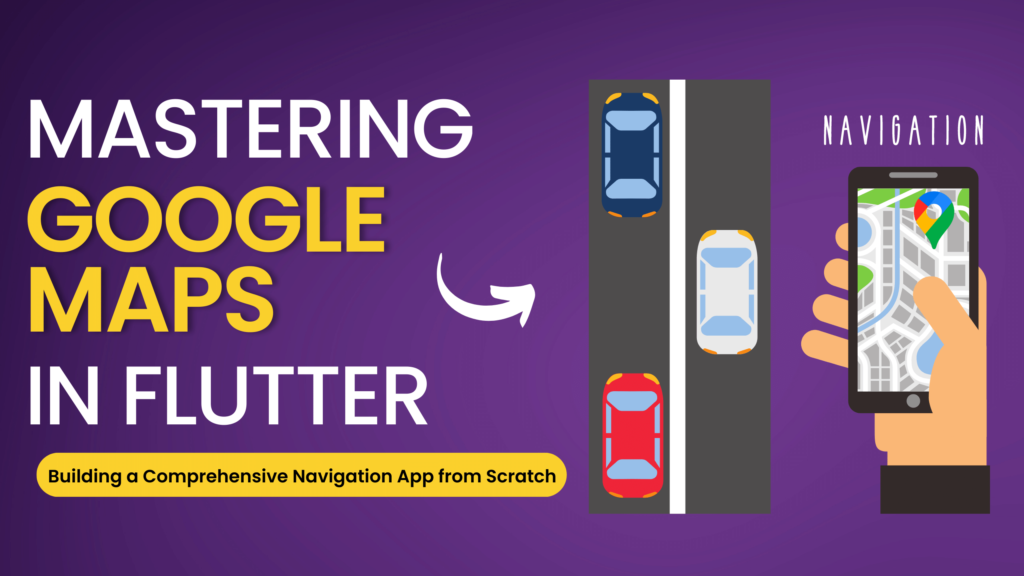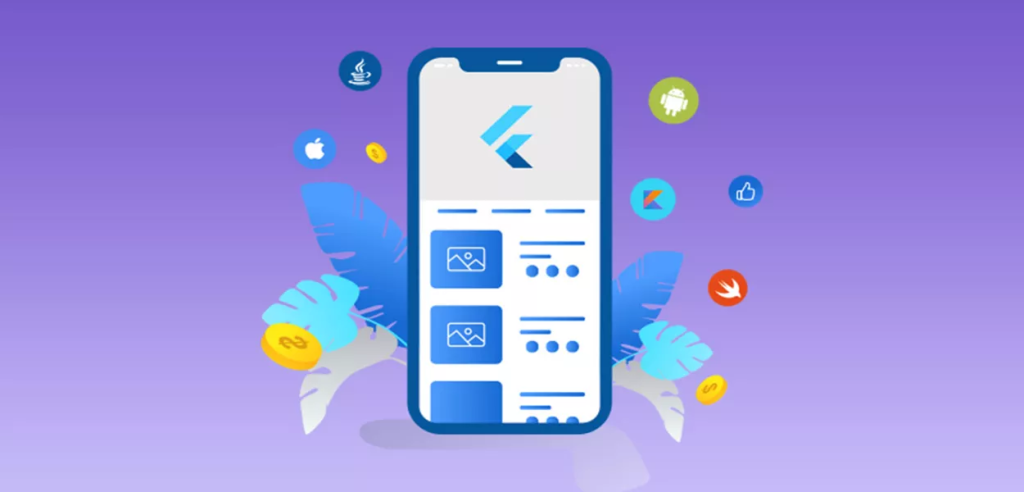In recent years, cross-platform development has gained significant traction due to its ability to streamline app development processes and reach a wider audience. Traditionally, developers had to build separate versions of their applications for different platforms, such as iOS, Android, and web. However, with the rise of cross-platform frameworks, developers can now write code once and deploy it across multiple platforms, saving time and resources.
One such framework that has been gaining widespread adoption is Flutter. Developed by Google, Flutter is an open-source UI software development kit (SDK) that enables developers to build natively compiled applications for mobile, web, and desktop from a single codebase. Its popularity stems from its fast development cycles, expressive and flexible UI, and native performance on multiple platforms.
In this guide, we will explore the fundamentals of cross-platform development and delve into how Flutter empowers developers to create robust and engaging applications for a variety of platforms. We’ll cover everything from setting up a development environment to building user interfaces, implementing navigation, managing state, handling data and networking, testing, deployment, and more. By the end of this guide, you’ll have a comprehensive understanding of how to leverage Flutter for cross-platform app development and unlock its full potential for your projects.
Understanding Flutter Basics
Flutter’s architecture is designed to enable cross-platform development by providing a unified framework for building native interfaces across iOS, Android, web, and desktop platforms. At its core, Flutter utilizes a layered architecture that consists of the following components:
- Flutter Engine: The foundation of Flutter’s architecture is the Flutter engine, which is written primarily in C++. It provides low-level rendering support using Google’s Skia graphics library and interacts with the underlying platform’s hardware and system services.
- Dart Framework: Flutter apps are written in the Dart programming language, which is optimized for building user interfaces. Dart’s reactive framework allows developers to create responsive and performant applications with a declarative syntax.
- Widgets: Flutter’s UI components are built using a rich set of widgets, which are lightweight, composable building blocks. Widgets in Flutter are immutable and declarative, meaning they describe the UI in terms of its current state rather than the sequence of changes that led to that state.
- Material Design and Cupertino: Flutter provides two sets of widgets that implement the design languages of both Android (Material Design) and iOS (Cupertino). This allows developers to create native-looking UIs that seamlessly adapt to the target platform.
- Platform Channels: Flutter apps can interact with platform-specific code through platform channels. This enables developers to access native APIs and services not directly supported by Flutter, such as camera access, Bluetooth functionality, or device sensors.
Flutter’s key features for efficient code sharing and platform adaptation include:
- Hot Reload: Flutter’s hot reload feature allows developers to quickly iterate on their code by instantly applying changes to the running app without needing to restart it. This significantly speeds up the development process and enables rapid experimentation.
- Single Codebase: With Flutter, developers can write a single codebase that runs on multiple platforms, eliminating the need to maintain separate codebases for iOS, Android, and other platforms. This reduces development time and ensures consistency across platforms.
- Pixel-Perfect UI: Flutter uses its own rendering engine, which ensures consistent UI rendering across platforms, resulting in pixel-perfect designs regardless of the underlying platform differences.
- Platform Adaptation: Flutter provides widgets and APIs to adapt the app’s behavior and appearance based on the target platform. Developers can use platform-specific widgets and themes to create native-looking UIs that feel right at home on each platform.
Overall, Flutter’s architecture and features make it a powerful tool for building cross-platform apps with high performance, native-like user experiences, and rapid development cycles.
Setting Up Flutter Development Environment
Setting up the Flutter development environment involves installing the Flutter SDK and configuring your preferred code editor or IDE for Flutter development. Here are the steps to set up Flutter on different platforms:
Installing Flutter SDK
1. Windows:
- Download the Flutter SDK for Windows from the official Flutter website.
- Extract the downloaded ZIP file to a location on your computer.
- Add the Flutter
bindirectory to your system PATH variable. - Open a command prompt and run
flutter doctorto verify the installation and check for any additional dependencies.
2. macOS:
- Download the Flutter SDK for macOS from the official Flutter website.
- Extract the downloaded ZIP file to a location on your computer.
- Add the Flutter
bindirectory to your system PATH variable by editing your shell profile file (e.g.,.bash_profile,.zshrc). - Open a terminal and run
flutter doctorto verify the installation and check for any additional dependencies.
3. Linux:
- Download the Flutter SDK for Linux from the official Flutter website.
- Extract the downloaded TAR file to a location on your computer.
- Add the Flutter
bindirectory to your system PATH variable by editing your shell profile file (e.g.,.bashrc,.zshrc). - Open a terminal and run
flutter doctorto verify the installation and check for any additional dependencies.
Setting Up IDEs
1. Android Studio:
- Install Android Studio from the official website.
- Install the Flutter and Dart plugins from the Android Studio Plugin Marketplace.
- Configure the Flutter SDK path in Android Studio settings.
- Create a new Flutter project or open an existing one to start coding.
2. Visual Studio Code (VS Code):
- Install Visual Studio Code from the official website.
- Install the Flutter and Dart extensions from the VS Code Marketplace.
- Open the command palette (Ctrl+Shift+P) and run the
Flutter: New Projectcommand to create a new Flutter project. - Open an existing Flutter project folder to start coding.
3. IntelliJ IDEA:
- Install IntelliJ IDEA from the official website.
- Install the Flutter and Dart plugins from the IntelliJ IDEA Plugin Marketplace.
- Configure the Flutter SDK path in IntelliJ IDEA settings.
- Create a new Flutter project or open an existing one to start coding.
Once you have completed these steps, your Flutter development environment should be set up, and you can start building Flutter apps on your chosen platform with your preferred code editor or IDE. Don’t forget to run flutter doctor regularly to check for updates and ensure that your development environment is configured correctly.
Building User Interfaces with Flutter
Flutter’s widget-based UI development approach allows developers to create highly customizable and interactive user interfaces for their apps. Here’s how to leverage Flutter’s capabilities to build responsive layouts and adaptive designs:
- Widget-Based UI Development:
- Flutter uses widgets as the basic building blocks for UI elements.
- Widgets are either stateless (immutable) or stateful (mutable) and can be composed together to create complex UIs.
- Flutter provides an extensive library of pre-built widgets for common UI elements like buttons, text fields, images, and more.
- Developers can also create custom widgets to encapsulate UI components and enhance reusability.
- Responsive Layouts:
- Flutter enables developers to create responsive layouts that adapt to different screen sizes and orientations.
- The
MediaQueryclass allows developers to retrieve information about the device’s screen size, orientation, and pixel density. - Widgets like
FlexibleandExpandedcan be used to create fluid layouts that adjust based on available space.
- Adaptive Designs:
- Flutter supports adaptive designs that adjust UI components based on platform differences (e.g., iOS vs. Android) and device characteristics.
- Platform-specific widgets like
Cupertinofor iOS andMaterialfor Android ensure consistent UI experiences across different platforms. - Flutter’s
Platformclass provides methods for detecting the current platform and adapting UI elements accordingly.
- Layout Constraints:
- Flutter offers various layout constraints like
Row,Column,Stack, andContainerto arrange widgets within a layout. - Developers can specify constraints such as alignment, padding, margins, and aspect ratios to control widget positioning and sizing.
- Flutter offers various layout constraints like
- State Management for UI Updates:
- Flutter’s reactive framework enables efficient UI updates in response to changes in application state.
- State management techniques like
setState,Provider,Bloc, andGetXhelp manage application state and update UI elements accordingly.
- UI Testing and Debugging:
- Flutter provides robust tools for testing and debugging UI elements.
- The Flutter DevTools suite offers insights into UI performance, layout debugging, and widget inspection during development.
- Automated testing frameworks like
flutter_testallow developers to write unit tests and integration tests for UI components.
By leveraging Flutter’s widget-based UI development approach and its support for responsive layouts and adaptive designs, developers can create visually stunning and user-friendly interfaces for their cross-platform applications.
Implementing Navigation and Routing
Navigation and routing are essential aspects of building mobile applications, allowing users to move between different screens and sections of the app seamlessly. In Flutter, navigation and routing are handled using a built-in navigation system. Here’s how to implement navigation and routing effectively in a Flutter app:
- Navigation Basics:
- Flutter’s navigation system revolves around the concept of routes, which represent individual screens or pages in the app.
- Each route is managed by a
Navigatorwidget, which maintains a stack of routes and facilitates navigation between them. - The
Navigatorwidget is typically placed at the root of the app’s widget tree.
- Defining Routes:
- Routes in Flutter are defined using the
MaterialAppwidget’sroutesparameter or by creating a customPageRoutesubclass. - Each route is associated with a unique route name and a builder function that returns the widget representing the route’s content.
- Routes in Flutter are defined using the
- Navigating Between Routes:
- To navigate to a new route, use the
Navigator.push()method, passing the currentBuildContextand the route name or widget. - To navigate back to the previous route, use the
Navigator.pop()method.
- To navigate to a new route, use the
- Navigation Stack:
- Flutter’s navigation system maintains a stack of routes, allowing users to navigate forward and backward through the app’s navigation history.
- When a new route is pushed onto the stack, it appears on top of the existing routes. Popping a route removes it from the stack, returning to the previous route.
- Named Routes and Deep Linking:
- Named routes provide a convenient way to define and navigate to routes using a predefined route name.
- Deep linking allows users to navigate directly to a specific screen within the app by providing a deep link URL with route parameters.
- Navigation Guards and Middleware:
- Flutter allows developers to implement navigation guards or middleware to intercept route changes and perform tasks such as authentication, permission checks, or data loading before navigating to a new route.
- Bottom Navigation and Tab Navigation:
- Flutter supports bottom navigation bars and tab bars for navigating between multiple top-level routes or sections within the app.
- The
BottomNavigationBarwidget andTabBarwidget can be used to implement bottom navigation and tab navigation, respectively.
By effectively implementing navigation and routing in a Flutter app, developers can create a smooth and intuitive user experience, allowing users to navigate between different sections of the app effortlessly.
State Management in Flutter
State management is a crucial aspect of building robust and maintainable Flutter applications, allowing developers to manage and update the application’s state efficiently. Flutter offers various state management approaches, each suited for different use cases and application architectures. Here’s an overview of different state management approaches in Flutter and how to choose the right one for your app:
- setState:
- The simplest form of state management in Flutter is using the
setStatemethod provided by theStatefulWidgetclass. - With
setState, changes to the widget’s state trigger a rebuild of the widget subtree, updating the UI to reflect the new state. setStateis suitable for managing state within small widgets or simple applications with minimal state requirements.
- The simplest form of state management in Flutter is using the
- InheritedWidget:
InheritedWidgetis a widget that propagates its properties down the widget tree, allowing descendant widgets to access and subscribe to its state.- It’s useful for sharing state across multiple widgets in the widget tree without explicitly passing the state through constructor parameters.
- While powerful,
InheritedWidgetcan become complex to manage in larger applications and may lead to performance issues due to excessive widget rebuilding.
- Provider:
- Provider is a state management solution that simplifies state propagation and dependency injection in Flutter applications.
- It leverages the
InheritedWidgetmechanism to provide a clean and efficient way to manage application state. - Provider offers different variants like
ChangeNotifierProvider,ListenableProvider, andFutureProviderto cater to various state management scenarios. - It’s well-suited for mid-sized to large applications and offers good performance and scalability.
- Bloc (Business Logic Component):
- Bloc is an architectural pattern for managing state and handling events in Flutter applications.
- It separates the presentation layer from the business logic layer, making it easier to test, maintain, and scale the application.
- Bloc relies on streams and sinks to propagate state changes and events throughout the application.
- While powerful and scalable, Bloc may introduce additional complexity, especially for developers new to reactive programming concepts.
- GetX:
- GetX is a lightweight and highly performant state management library for Flutter applications.
- It offers a variety of features, including state management, dependency injection, routing, and more, all in a single package.
- GetX is known for its simplicity, ease of use, and excellent performance, making it suitable for both small and large-scale projects.
- Choosing the Right Approach:
- The choice of state management approach depends on factors such as the complexity of your application, team familiarity, and performance requirements.
- For small applications with limited state,
setStateorInheritedWidgetmay suffice. - For medium to large applications with complex state requirements, consider using Provider, Bloc, GetX, or other dedicated state management solutions.
By understanding the different state management approaches available in Flutter and their respective strengths and weaknesses, developers can choose the most appropriate solution to build scalable and maintainable applications.
Working with Platform-Specific Code
Integrating platform-specific code is often necessary when building cross-platform applications to leverage device-specific capabilities or implement platform-specific features. Flutter provides a mechanism called platform channels to facilitate communication between Dart code and native platform code (Java/Kotlin for Android and Swift/Objective-C for iOS). Here’s how you can work with platform-specific code in Flutter:
- Understanding Platform Channels:
- Platform channels allow Flutter code to communicate with platform-specific code through a message passing mechanism.
- Flutter provides a set of APIs to invoke platform methods and handle method calls from the native side.
- Setting Up Platform Channels:
- Define method channels in Dart code using
MethodChannelfor invoking platform methods andEventChannelfor listening to platform events. - Register platform method handlers on the native side to handle method invocations from Flutter.
- Define method channels in Dart code using
- Implementing Platform-Specific Features:
- Identify the platform-specific features or capabilities you need to access in your Flutter app, such as accessing device sensors, camera, geolocation, or platform-specific APIs.
- Write platform-specific code in Java/Kotlin for Android or Swift/Objective-C for iOS to implement the desired functionality.
- Using Method Channels:
- Use
MethodChannelto invoke platform methods from Flutter code and receive results asynchronously. - Define platform method signatures and arguments on both the Flutter and native sides to ensure proper communication.
- Use
- Handling Method Calls on the Native Side:
- Implement method call handlers on the native side to handle method invocations from Flutter.
- Process method calls, perform the necessary platform-specific tasks, and return results or send back asynchronous events to Flutter.
- Example Use Cases:
- Accessing device sensors (e.g., accelerometer, gyroscope) for sensor data collection.
- Integrating native APIs for authentication, payment processing, or accessing platform-specific UI components.
- Implementing platform-specific UI features, such as native navigation bars, dialogs, or animations.
- Testing and Debugging:
- Test platform-specific code on physical devices or simulators/emulators to ensure proper functionality across platforms.
- Use logging and debugging tools provided by Flutter and native platforms to troubleshoot issues and diagnose errors.
By leveraging platform channels and platform-specific code integration, Flutter developers can access device capabilities and implement platform-specific features seamlessly, enhancing the functionality and user experience of their cross-platform applications.
Handling Data and Networking
Data handling and networking are essential aspects of app development, enabling communication with remote servers and efficient data management. In Flutter, you can fetch data from APIs and store it locally using various libraries and storage solutions. Here’s how to handle data and networking effectively in Flutter:
- Fetching Data from APIs:
- Utilize Flutter’s built-in
httppackage or third-party packages likediofor making HTTP requests to remote APIs. - Define API endpoints and request parameters, and handle responses asynchronously using Dart’s
Futureandasync/awaitsyntax. - Parse JSON or other response formats using Dart’s built-in
jsonpackage or other serialization libraries likejson_serializable.
- Utilize Flutter’s built-in
- Displaying Data in UI:
- Once data is fetched from the API, bind it to UI elements using Flutter’s widget tree.
- Use stateful widgets or state management solutions like Provider or Bloc to update UI components dynamically based on data changes.
- Storing Data Locally:
- For local data storage, Flutter provides several options:
- SQLite: Utilize the
sqflitepackage to interact with SQLite databases for structured data storage. - Shared Preferences: Store key-value pairs persistently using Flutter’s
shared_preferencespackage for simple data persistence. - Local Files: Write and read data to/from local files using Dart’s built-in file I/O capabilities.
- Hive: Alternatively, use the
hivepackage for lightweight and fast NoSQL data storage.
- SQLite: Utilize the
- For local data storage, Flutter provides several options:
- Managing Data State:
- Choose an appropriate state management approach based on the complexity and requirements of your app.
- For simple apps, manage state locally within widgets using
setState. - For complex apps, consider using state management libraries like Provider, Bloc, or Riverpod for better organization and scalability.
- Optimizing Network Requests:
- Implement best practices for network requests, such as using HTTP caching, batching requests, and handling errors gracefully.
- Utilize features like connection pooling and request cancellation to optimize network performance and resource usage.
- Testing Data Handling and Networking:
- Write unit tests and integration tests to ensure data handling and network requests behave as expected.
- Mock network responses and simulate various network conditions (e.g., slow connections, timeouts) to validate app behavior under different scenarios.
By effectively handling data and networking in your Flutter app, you can ensure seamless communication with remote APIs, efficient data management, and a responsive user experience.
Testing and Debugging Flutter Apps
Testing and debugging are critical aspects of app development to ensure the functionality, reliability, and performance of Flutter apps. Here are strategies for testing Flutter apps using various techniques and tools:
- Unit Testing:
- Write unit tests to verify the behavior of individual functions, methods, or classes in isolation.
- Utilize the built-in
flutter_testpackage to create unit tests using thetestfunction and assertions. - Test pure Dart code and Flutter-specific code using Flutter’s test APIs and matchers.
- Widget Testing:
- Conduct widget tests to validate the behavior and appearance of UI components and widget trees.
- Use the
flutter_testpackage’sWidgetTesterclass to interact with widgets and simulate user interactions. - Test UI layouts, widget states, and widget interactions to ensure correct rendering and functionality.
- Integration Testing:
- Perform integration tests to validate the interaction between multiple widgets, screens, or app components.
- Write integration tests using Flutter’s testing framework or third-party packages like
flutter_driverfor end-to-end testing. - Test navigation flows, data persistence, and interactions with external services or APIs.
- Debugging Techniques:
- Utilize Flutter’s built-in debugging tools and features for diagnosing issues during development.
- Use the Flutter DevTools browser-based tool to inspect UI layouts, view widget hierarchy, and analyze performance.
- Employ logging and print statements to output debug information and trace program execution flow.
- Leverage IDE debugging features such as breakpoints, watch expressions, and stack traces to identify and resolve runtime errors.
- Emulator and Device Testing:
- Test apps on various devices, screen sizes, and orientations to ensure compatibility and responsiveness.
- Use Flutter’s hot reload feature to quickly iterate and debug code changes without restarting the app.
- Conduct performance testing on different devices to optimize app performance and responsiveness.
- Continuous Integration (CI) and Continuous Deployment (CD):
- Set up CI/CD pipelines to automate the testing, building, and deployment processes for Flutter apps.
- Integrate Flutter testing frameworks with popular CI/CD platforms like Travis CI, CircleCI, or GitHub Actions for automated testing and deployment.
By incorporating comprehensive testing and debugging practices into your Flutter app development workflow, you can identify and resolve issues early, ensure code quality, and deliver a polished and reliable user experience.
Optimizing Performance and Efficiency
Optimizing performance and efficiency is crucial for delivering high-quality Flutter apps that provide smooth user experiences while conserving device resources. Here are techniques and best practices for optimizing Flutter app performance and efficiency:
- Code Splitting:
- Implement code splitting techniques to divide your app’s codebase into smaller chunks or modules.
- Utilize Flutter’s code splitting features to load only the necessary code segments when required, reducing initial load times and improving app startup performance.
- Lazy Loading:
- Implement lazy loading for components, libraries, or resources that are not immediately needed when the app launches.
- Load resources, images, or UI components on-demand as the user interacts with the app to minimize initial loading times and conserve memory.
- Optimizing Build Sizes:
- Minimize the size of your app’s APK or IPA by optimizing asset compression, removing unused resources, and reducing dependency overhead.
- Utilize Flutter’s tree shaking and dead code elimination features to eliminate unused code during the build process, resulting in smaller app sizes.
- Network Optimization:
- Optimize network requests by minimizing the number of API calls, reducing payload sizes, and implementing caching mechanisms for frequently accessed data.
- Utilize HTTP compression techniques such as gzip or brotli to reduce the size of network payloads and improve data transfer efficiency.
- Rendering Performance:
- Optimize UI rendering performance by reducing the complexity of UI layouts, minimizing widget rebuilds, and leveraging Flutter’s rendering optimizations.
- Use the
constkeyword for immutable widgets and components to enable compile-time optimizations and reduce widget rebuilds.
- Memory Management:
- Implement efficient memory management practices to minimize memory usage and prevent memory leaks.
- Profile your app’s memory usage using Flutter’s DevTools or third-party profiling tools to identify memory-intensive operations and optimize memory allocation.
- Background Processing:
- Offload resource-intensive or time-consuming tasks to background processes to prevent UI blocking and ensure smooth app performance.
- Utilize Flutter’s
IsolateAPI for concurrent execution of background tasks, such as data processing, file I/O, or image manipulation.
- Performance Monitoring and Analysis:
- Continuously monitor app performance using profiling tools, performance metrics, and analytics to identify performance bottlenecks and areas for improvement.
- Conduct performance testing on various devices and network conditions to ensure consistent performance across different environments.
By implementing these techniques and best practices for optimizing performance and efficiency, you can enhance the responsiveness, stability, and user satisfaction of your Flutter apps, delivering a seamless experience across a wide range of devices and usage scenarios.
Deployment and Distribution
Deploying and distributing Flutter apps is the final step in the development lifecycle, ensuring that your app reaches users on their preferred platforms. Here are the steps to build, deploy, and distribute Flutter apps across various platforms:
- Platform-Specific Configuration:
- Configure your Flutter app for deployment on different platforms, including Android, iOS, web, and desktop.
- Set up platform-specific configurations such as app icons, splash screens, and permissions to ensure compatibility with each target platform.
- Building Release Builds:
- Generate release builds of your Flutter app using the
flutter buildcommand with the appropriate flags for each platform. - For Android, generate an APK (Android Package) file by running
flutter build apk. - For iOS, generate an IPA (iOS App Store Package) file by running
flutter build ios.
- Generate release builds of your Flutter app using the
- Code Signing and Certificate Management:
- Obtain necessary code signing certificates and provisioning profiles for iOS app distribution through the Apple Developer Portal.
- Sign your Android app with the appropriate signing key to ensure its authenticity and integrity during installation.
- Testing and Quality Assurance:
- Conduct thorough testing of your release builds to ensure they meet quality standards and perform as expected across different devices and environments.
- Test your app’s compatibility with various screen sizes, resolutions, and device configurations to identify and address any potential issues.
- App Store Submission:
- Prepare your Flutter app for submission to app stores such as Google Play Store and Apple App Store.
- Create app listings, including descriptions, screenshots, and promotional assets, following the guidelines and requirements of each app store.
- App Store Optimization (ASO):
- Optimize your app’s metadata, including app title, description, and keywords, to improve its visibility and discoverability in app store search results.
- Utilize relevant keywords and compelling visuals to attract users and encourage downloads.
- Beta Testing and Distribution:
- Distribute beta versions of your Flutter app to testers and stakeholders for feedback and testing before the official release.
- Use app distribution platforms like Firebase App Distribution, TestFlight, or Google Play Console’s internal testing track to manage beta testing and gather feedback.
- Release Management:
- Plan and coordinate the release of your Flutter app across different platforms, ensuring a smooth rollout and minimal disruption to users.
- Monitor app performance, user feedback, and crash reports after release to address any issues promptly and provide continuous updates and improvements.
By following these deployment and distribution best practices, you can successfully launch your Flutter app on multiple platforms, reach a broader audience, and deliver a seamless user experience to your users.
Advanced Topics and Considerations
As you delve deeper into Flutter development, there are advanced topics and considerations that can enhance the functionality, accessibility, and security of your apps. Here are some areas to explore:
- Animations and Gestures:
- Implement custom animations using Flutter’s animation APIs to create engaging user interfaces and delightful user experiences.
- Utilize gesture detection to add interactive elements such as swiping, tapping, and dragging to your app’s UI, enhancing usability and intuitiveness.
- Custom Painting and Graphics:
- Harness Flutter’s custom painting capabilities to create complex and visually appealing graphics, charts, and visualizations.
- Explore the use of custom painting techniques for advanced UI customization and creative design elements.
- Internationalization (i18n) and Localization:
- Implement internationalization and localization features to make your app accessible to users worldwide, supporting multiple languages, date formats, and currencies.
- Utilize Flutter’s built-in internationalization support and packages like
flutter_localizationsto streamline the localization process.
- Accessibility and Inclusive Design:
- Ensure your Flutter app is accessible to users with disabilities by following accessibility best practices and guidelines, such as adding descriptive text to UI elements and providing keyboard navigation support.
- Conduct accessibility testing and use tools like the Flutter Accessibility Inspector to identify and address accessibility issues.
- Security Considerations:
- Implement secure coding practices to protect sensitive data and user information in your Flutter app.
- Utilize encryption techniques, secure storage solutions, and secure communication protocols to safeguard data privacy and prevent security breaches.
- Stay informed about common security vulnerabilities and mitigation strategies relevant to Flutter development, such as Cross-Site Scripting (XSS), SQL injection, and insecure data storage.
- Performance Optimization:
- Optimize your Flutter app’s performance by minimizing app size, reducing memory usage, and optimizing rendering performance.
- Utilize tools like the Flutter DevTools and profiling techniques to identify performance bottlenecks and optimize critical paths in your app’s codebase.
- Continuous Integration and Deployment (CI/CD):
- Implement CI/CD pipelines to automate the build, testing, and deployment processes for your Flutter apps.
- Use CI/CD tools and services such as GitHub Actions, Travis CI, or Codemagic to streamline the development workflow and ensure consistent app quality across releases.
By exploring these advanced topics and considerations, you can take your Flutter development skills to the next level and build high-quality, feature-rich apps that provide exceptional user experiences while prioritizing accessibility, security, and performance.
Conclusion
In conclusion, mastering advanced topics and considerations in Flutter development opens up a world of possibilities for building robust, high-performance, and user-friendly applications. By delving into areas such as animations, custom painting, internationalization, accessibility, security, and performance optimization, you can elevate your Flutter skills and create apps that stand out in today’s competitive market.
Remember to stay updated with the latest advancements in Flutter and continuously explore new techniques and best practices to refine your development process. By embracing these advanced topics, you’ll not only enhance your app development capabilities but also deliver exceptional experiences to users across different platforms and devices.
Keep pushing the boundaries of what’s possible with Flutter, and strive to create innovative and impactful apps that leave a lasting impression on users. With dedication, continuous learning, and a passion for excellence, you can become a proficient Flutter developer capable of building cutting-edge applications that make a difference in the digital world.

